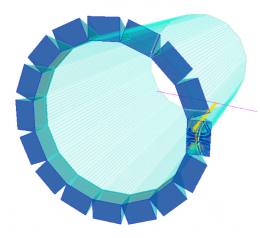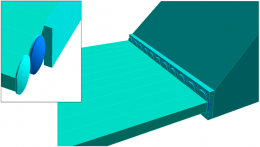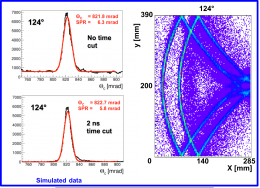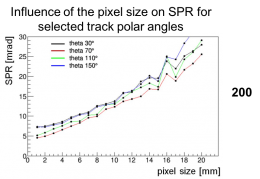High-Performance Detection of Internally Reflected Cherenkov Light (DIRC)
Summary of current status
The EIC DIRC design is inspired by the design of the PANDA Barrel DIRC detector and many synergies exist in the R&D processes of both projects. The primary goal of developing a high-performance DIRC is to have a compact device that can satisfy the PID requirements of the EIC.
The baseline design, implemented in a Geant4 simulation, is shown above. The radiators are synthetic fused silica bars, each 4200 mm long, with a cross-section of 17 mm × 35.4 mm divided into 16 modules, called bar boxes. In each box eleven bars are placed side-by-side and separated by a small air gap. The 16 bar boxes are arranged in a barrel with a radius of 1m around the beam line. Mirrors are attached to one end of each bar. On the readout end, where photons exit the bar, a special 3-layer lens, that will be described further, is attached to each bar. The other side of the 3-layer lens is coupled directly to a prism that serves as an expansion volume. A zoom into the readout end of the bar box, showing details of the lens and prism section is shown on a right side of Fig. 4. The prism is made of fused silica, has a 38 degrees opening angle, and has dimensions of 284.3 mm × 390 mm × 300 mm. The detector plane of each prism is covered by 27,690 2 mm × 2 mm pixels giving a total of about 443,040 channels to record the location and arrival time of the Cherenkov photons.
The focus on the 3-layer lens is shown below:
Example of performance for selected polar angle of 7GeV/c proton is shown here:
The resolution of reconstructed Cherenkov angle depends on the pixel size of sensor. Geant4 study of that aspect is summarized on the plot:



